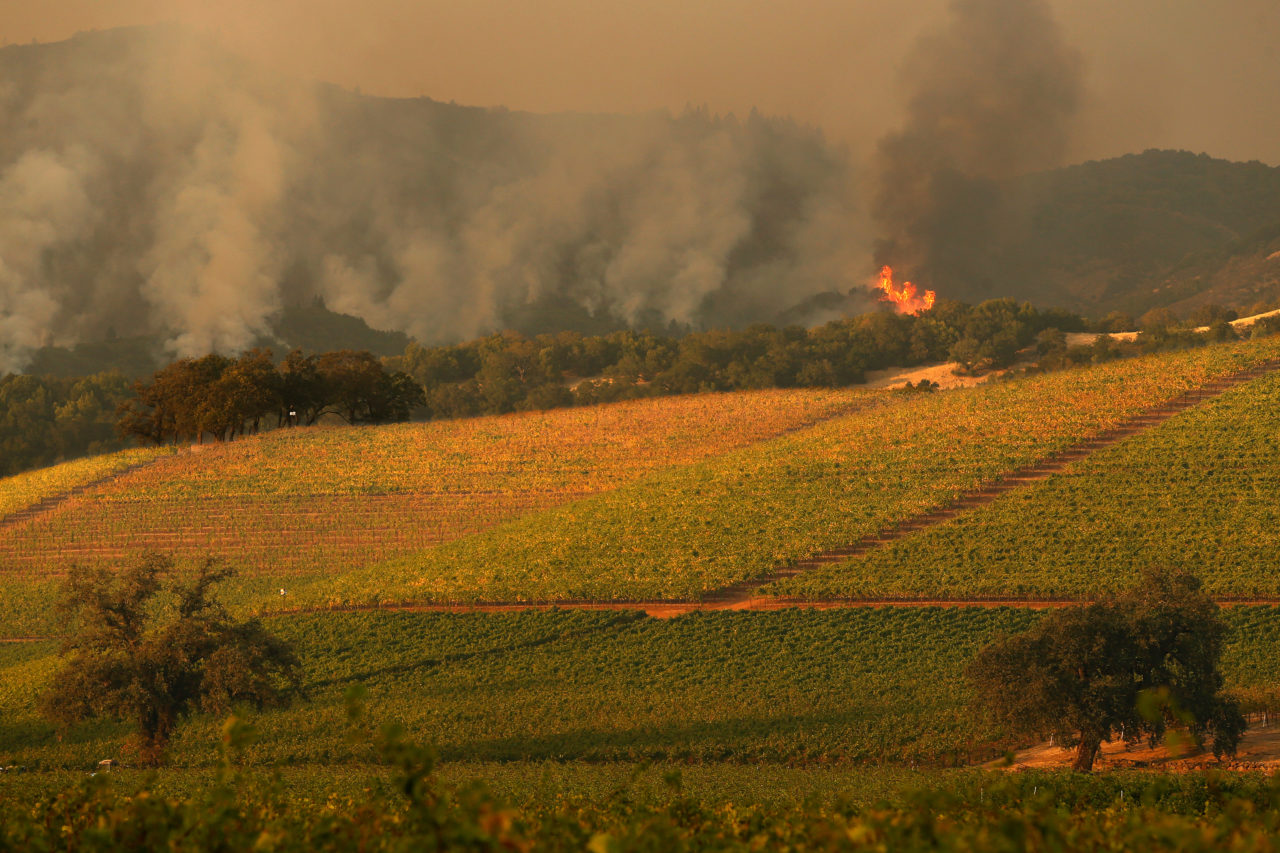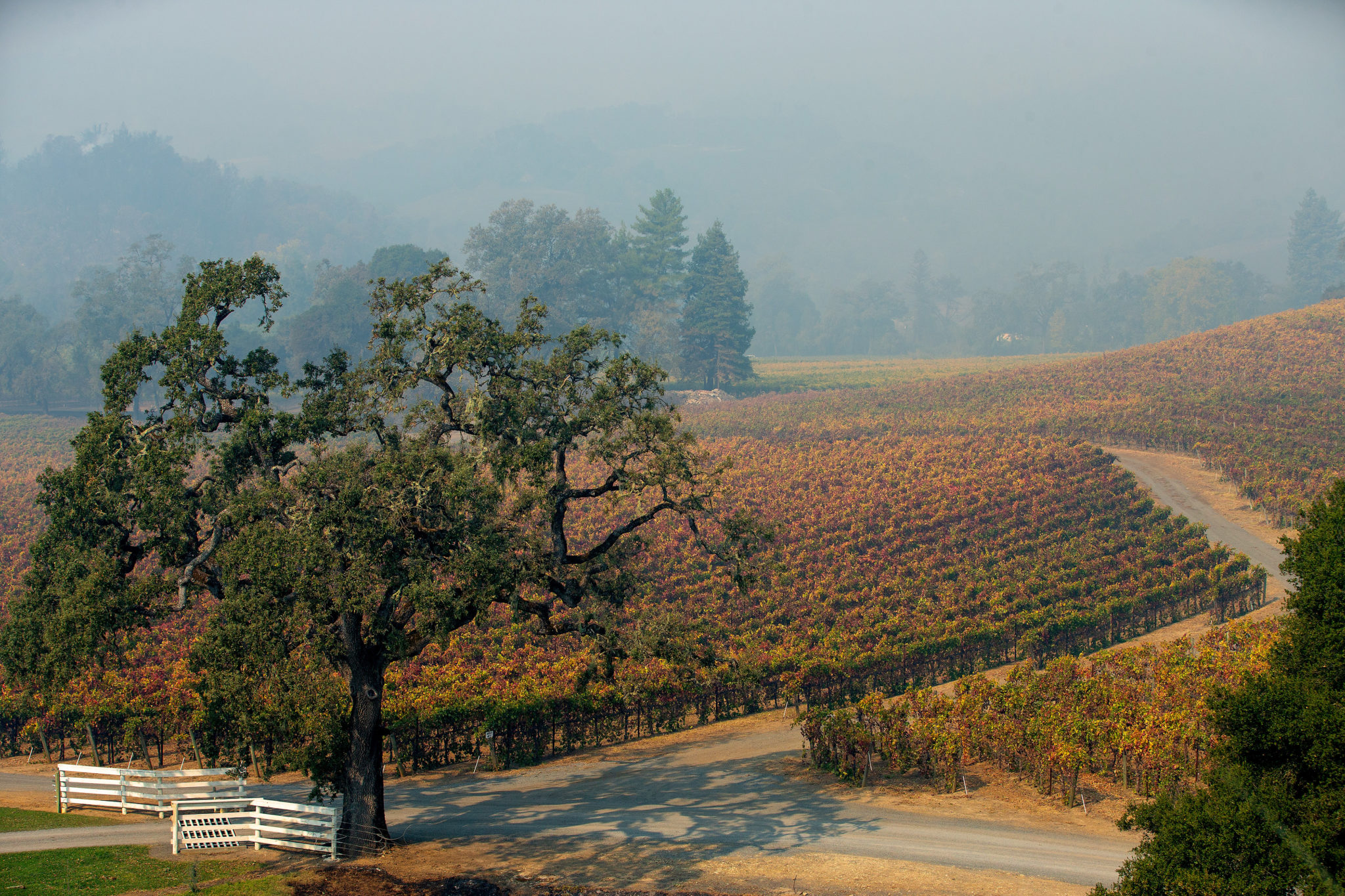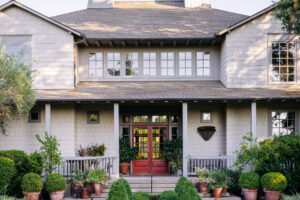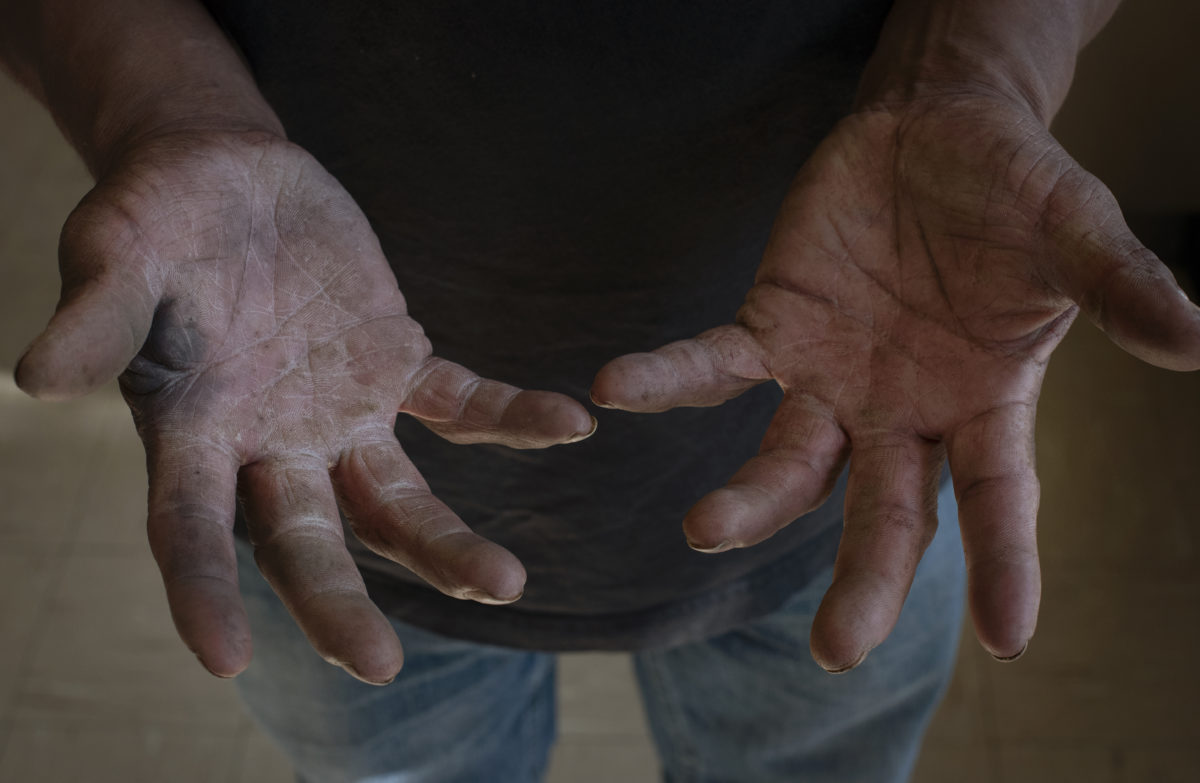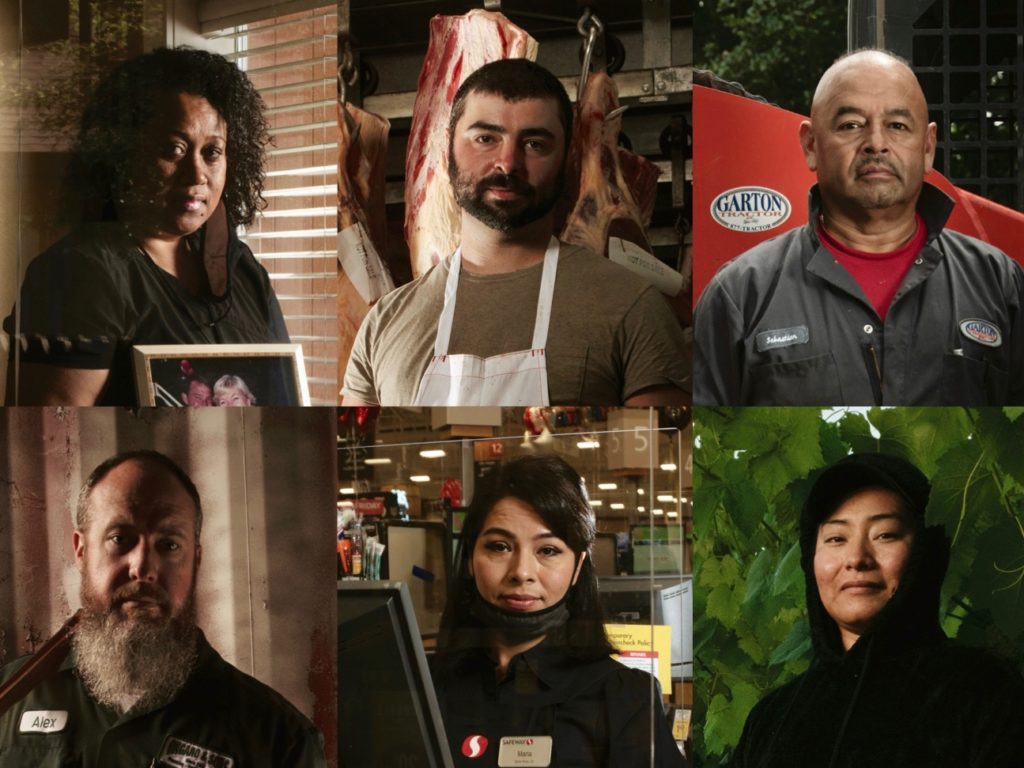Late into an unseasonably warm night in August 2020, Raymundo was harvesting Pinot Noir grapes with a 10-person crew at a vineyard in Healdsburg. A little over three miles away, the lightning-sparked Walbridge fire had begun to spread quickly, shrouding the hills of northwestern Sonoma County in thick smoke.
To protect himself, Raymundo put on an N95 mask, but his eyes began to itch and his head ached. Still, he and the crew kept working by the light of their headlamps, moving fast, breathing heavily.
Raymundo, 48, is a veteran farmworker who has labored in California vineyards since arriving from Mexico 22 years ago. At the time, he was living with his wife and three children in a small house on the same vineyard property where he worked. He asked that his full name not be used, for fear of retaliation from his employers.
That night, as he and his crew were busy harvesting, the smoke grew thick in the summer darkness. He looked up and saw a light coming toward them. It was the vineyard owner, who told them to stop work and go home. Although the fire was still a distance away, the smoke was too thick.
The next day, sheriff’s officials knocked on Raymundo’s door and told him and his family to evacuate. By that time, hotels in the region were full of fire refugees—a wide swath of west county was threatened by the Walbridge fire, and residents stretching from Guerneville to the western outskirts of Healdsburg had been ordered to flee their homes.
With nowhere to go, Raymundo and his family drove nearly four hours to a relative’s house in the Central Valley. Several days later, Raymundo got a call from his boss. Although evacuation warnings were still in place, it was time to go back to work.
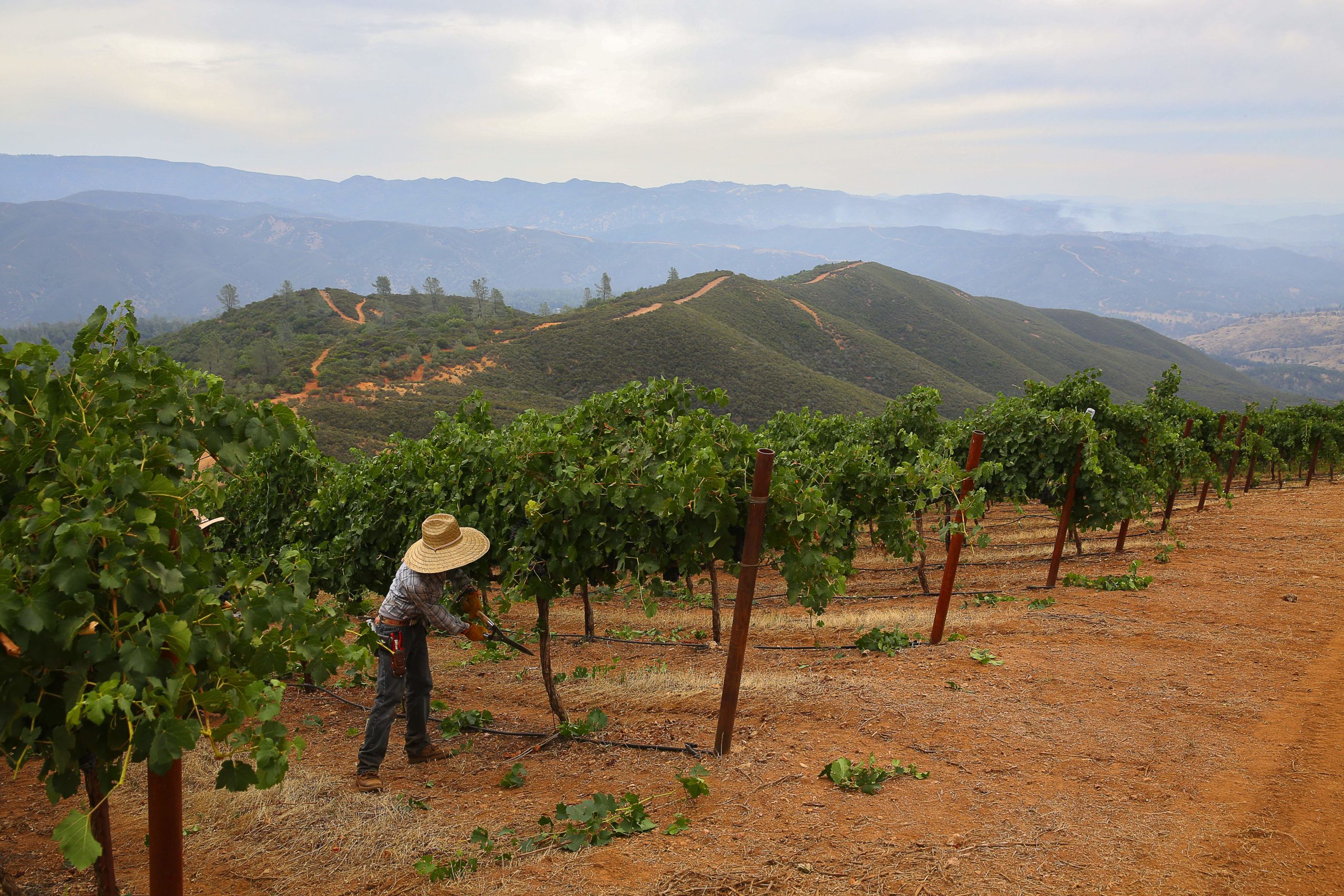
Every year, for a frenzied period beginning in early August, Sonoma County’s vineyards reap the harvest they’ve spent all year cultivating. The roughly 11,000 grape workers who call the county home harvest a crop that covers more than 62,000 acres and in 2019 was valued at $654 million. Combine that with harvests from Napa, Mendocino and Lake counties, and the total haul topped $1.8 billion.
But those make-or-break weeks stretching through October now coincide with a fire season that’s grown longer and more catastrophic.
Farming goes on amid these disasters. Vineyard workers are deemed “essential” by the state, meaning their jobs continue even in times of crisis. They harvest regularly in the cool hours of night during the North Bay’s hottest and driest months. That collision — of fire season and grape harvest — now increasingly forces workers to risk their health, and sometimes their safety, to bring in the crop.
These competing environmental and economic forces have thrust Sonoma County to the front line of a human health dilemma with implications for fire-prone communities across the West. Amid a historic drought that’s fueling another severe fire season, local and state officials are proposing a raft of new regulations on this multi-billion-dollar industry, while leaders in the farm labor movement are calling for more to be done to protect their members.
Wine industry representatives and leaders say they recognize the health and safety risks as an emerging existential threat to their business — one on par with the threats posed by climate change.
“Worker safety is the number one priority for our local farmers,” says Karissa Kruse, president of Sonoma County Winegrowers, a group that represents the interests of 1,800 growers. “They provide workforce housing, education, and they have been innovative in how to safely keep vineyard workers employed during the Covid-19 crisis. Our local grape growers are not activists, but local families in our Sonoma County community who have been caring for the land, spending time and money investing in our community and ensuring that the health and well-being of their workforce is always at the forefront.”
Vineyard managers who oversee much of the harvest say they are taking steps beyond standard protective equipment such as face masks and safety checks to minimize the peril for laborers. Tony Bugica, director of farming and business development at Napa’s Atlas Vineyard Management and one of 11 commissioners of the Sonoma County Winegrowers, describes his harvest procedures with military precision.
In case cell networks go down, he carries a satellite phone. In case of stray sparks, every truck has a fire extinguisher and water tank. Everyone uses a buddy system so no one’s caught alone. “I never send anyone into a place where I wouldn’t go myself,” he says. “No job is worth a human life.”
But in an industry that has prided itself on environmental sustainability, the question hangs over Wine Country: Can it be as proactive about safeguarding its workers?
“Climate change is here,” says state Assemblyman Robert Rivas, a Democrat from Hollister who has introduced new legislation aimed at protecting farmworkers during wildfires. “And it has forced a lot of people, all across the county, to consider what kinds of conditions our farmworkers face not just during wildfires, but every single day.”
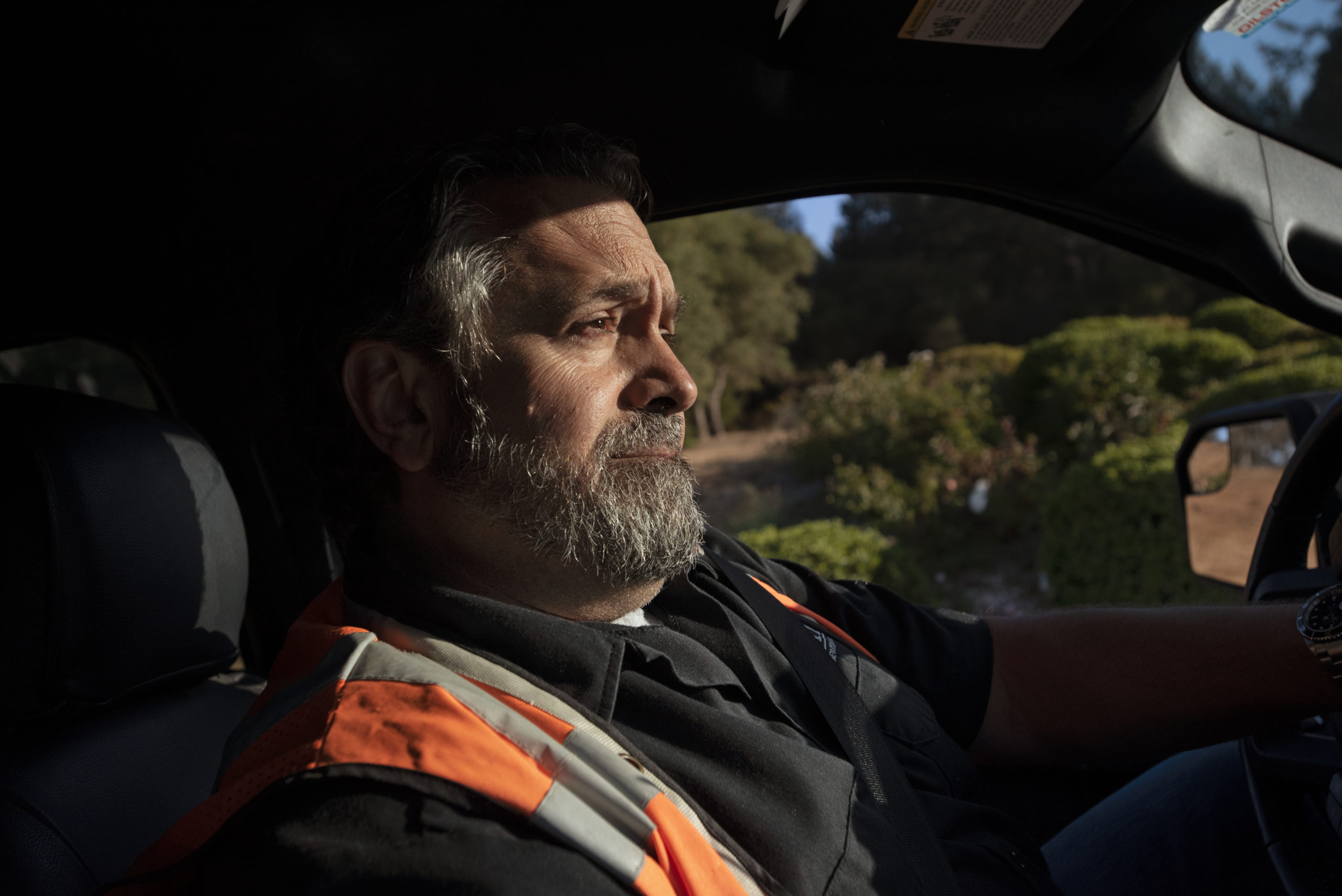
Agricultural work can be perilous even in ordinary times. Until recently, wildfire smoke was not among the top concerns for labor advocates. But the infernos that have burned across Wine Country over the past four years — as well as a growing body of scientific evidence about the health risks of wildfire smoke — have changed that.
Smoke particles from wildfires are infinitesimally small, about one twentieth the size of a human hair. They can penetrate the body’s normal defenses, lodging deep inside the lungs. A toxic mix of heavy metals and chemicals released by burning buildings, automobiles, propane tanks, and other structures can also make wildfire smoke as much as 10 times more dangerous than other types of air pollution, according to a study from the Scripps Institution of Oceanography at UC San Diego.
Jennifer Fish, a family physician with Santa Rosa Community Health and cofounder of Health Professionals for Equality and Community Empowerment (H-PEACE), says she routinely sees farmworkers and their families suffering from the impacts of smoke inhalation. “This community is one of our most marginalized,” she says. “We see workers having no choice but to work under dangerous circumstances in order to survive.”
A variety of other risk factors, including poor access to healthy foods, unstable housing, and financial insecurity, can make farm laborers vulnerable to asthma, heart disease, and lung disease, says Fish. In pregnant women, smoke exposure is linked to low birth weight and preterm birth. There are also the invisible effects of living year after year with the stress of wildfire disasters: depression, anxiety, and PTSD.
The health risks don’t dissipate after the flames are extinguished. A recent UC Davis study found that residual ash continues to emit dangerous particulates that pose an additional threat to outdoor workers — even after the skies have cleared. And while it’s not known exactly how many of Sonoma County’s vineyard workers are undocumented — the share is said to be significant — that status can exacerbate a lack of access to health care and other aid.
In July, U.S. Rep. Mike Thompson cosponsored a bill that authorized $20 million to study the effects of smoke on human health and provides funding for ways to mitigate its effects.
Although rampant wildfire is not new in California, regulations protecting outdoor workers from the effects of smoke exposure are still in their infancy. The state agency tasked with ensuring worker safety, Cal/OSHA, only enacted its main standard in 2019.
The rule mandates that employers make N95 masks available to outdoor workers when the Air Quality Index (AQI) is higher than 151, or “unhealthy.” Workers are only required to wear masks when the AQI reaches 500, past “hazardous” — a designation so high that it is not separated out on the now-familiar color-coded index scale.
While many labor groups welcomed the new regulations, Jennifer Fish says that this baseline isn’t a sound basis for health policy. “If an AQI is over 150, I don’t go outside without an N95. It is not acceptable for people to work under those conditions,” she says. “This is negligent.”
But N95 masks aren’t effective when worn improperly. And they can make it difficult for wearers to breathe, especially during strenuous work, such as agricultural labor.
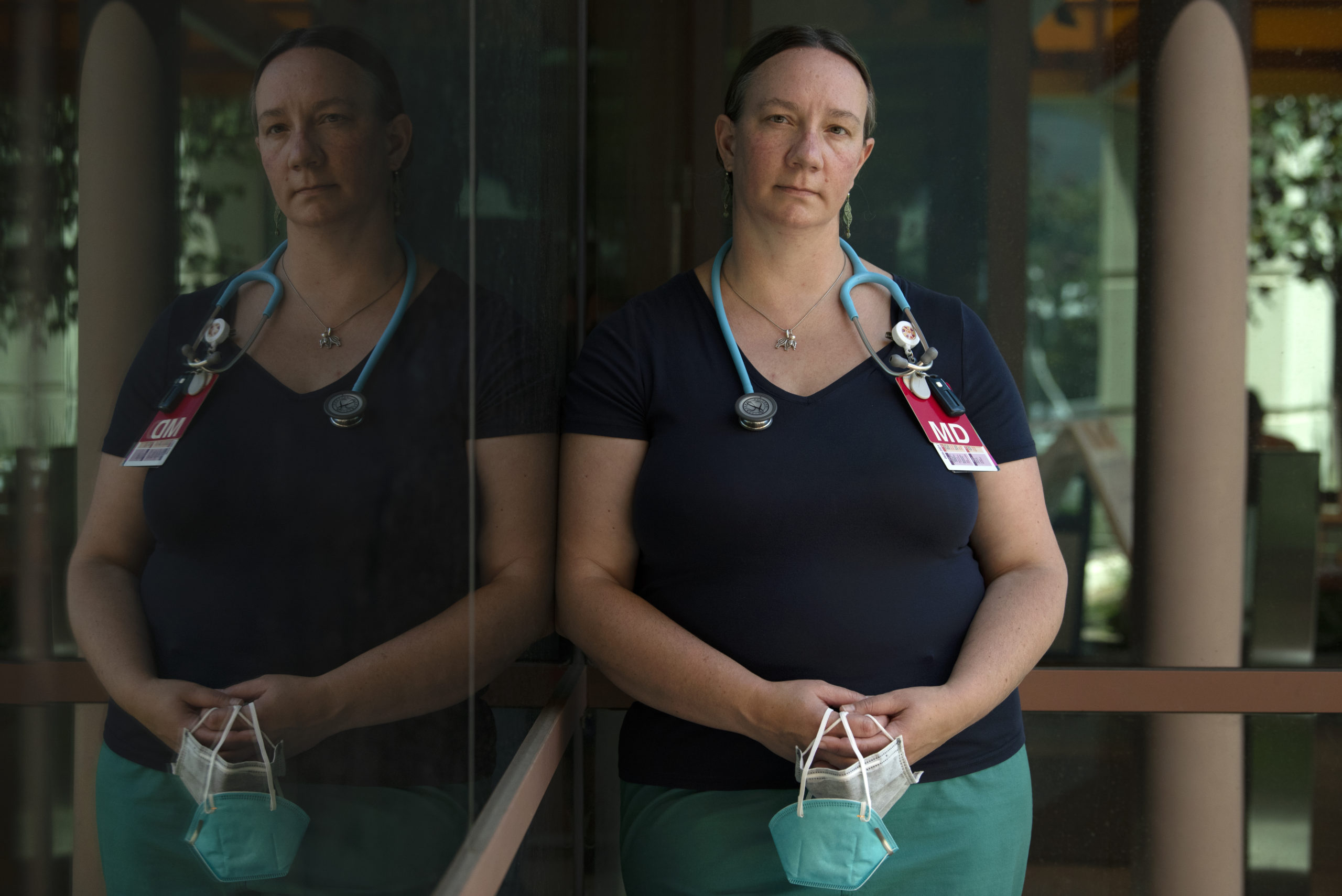
Who Decides What’s Safe?
One of many points of contention in addressing issues of worker safety is that while federal and state regulations are on the books (and continue to evolve), too often the concerns of farmworkers go unaddressed. Cal/OSHA is the state agency charged with enforcing safe workplace practices— but the agency has long been overextended and understaffed.
Various state and county agencies each take on a different aspect of safety oversight, but labor groups say they could be doing more.
After an area is evacuated, the ones ultimately making the calls at key evacuation checkpoints are public safety officials—firefighters, police officers, even members of the National Guard—who monitor changing fire conditions, verify Ag Pass permits, and allow farmers and workers into evacuation zones.
While the county’s Agriculture Commission oversees the requirements for entry of farmworkers into evacuation zones, it denies having the legal authority or the funding to oversee worker safety behind evacuation lines.
The newly created Sonoma County Office of Equity has been working closely with the Agriculture Commissioner to revise the system in a way that ensures racial equity, but its mandate doesn’t include oversight of worker safety.
Meanwhile, labor advocacy groups like North Bay Jobs with Justice and the Graton Day Labor Center argue that because the county is making the decision to allow entry into these zones, it is also responsible for protecting the workers it allows inside.
Omar Paz, a lead organizer with the grassroots labor coalition North Bay Jobs with Justice, says he worries whether employers are following Cal/OSHA’s mask guidelines.
Karissa Kruse with Sonoma County Winegrowers says, “All our growers follow strict Cal/OSHA worker safety regulations and provide workers with personal protective equipment which is required by law.”
Last year, however, the United Farm Workers conducted a statewide poll of 350 farmworkers and found 84% reported that even in the middle of the Covid-19 pandemic, these workers weren’t receiving masks from their employers.
“Vineyards and wineries are extremely disconnected from the realities of the management companies they contract with,” says Paz. “I don’t think owners or even managers have a pulse on the reality of the conditions [workers are] facing.”
Cameron Mauritson, partner at Healdsburg-based Thomas Mauritson Vineyards, which grows roughly 1,000 acres of wine grapes in Sonoma and Lake counties, acknowledges wine industry businesses could do more to improve their responsiveness to worker needs. Although some of his employees have been working for the family for two generations, he worries about his blind spots.
“One of my biggest fears is, ‘What if we were making people feel unsafe and didn’t know about it?’” he says. One thing is clear: “We need better guidance from enforcement agencies—from OSHA.”
Cal/OSHA representative Frank Polizzi says the agency enforces the new smoke standard with targeted inspections of worksites, and points to new wildfire-safety training materials made available online. He also notes a recent effort, a “labor rights caravan,” organized by the state’s Department of Industrial Relations and the Labor & Workforce Development Agency, that has been making stops at farms statewide to educate workers on their right to protection from heat illness, wildfire smoke, and retaliation.
Still, labor advocates say that those wanting to file a complaint face daunting barriers: language, lack of knowledge of the system, and fear of reprisal.
Of the 144 Sonoma County complaints filed in 2020 with Cal/OSHA, four stemmed from problems with wildfire smoke and only one led to a citation.
Labor advocates say the small numbers point to a larger issue: Cal/ OSHA is severely understaffed, with only 10 inspectors for the fivecounty district to which Sonoma belongs. Only one of those inspectors speaks Spanish, and none currently speak any of the various Indigenous languages represented in the workforce.
“If you’re not able to enforce a law, then for workers at least, it doesn’t exist,” says physician Jennifer Fish.
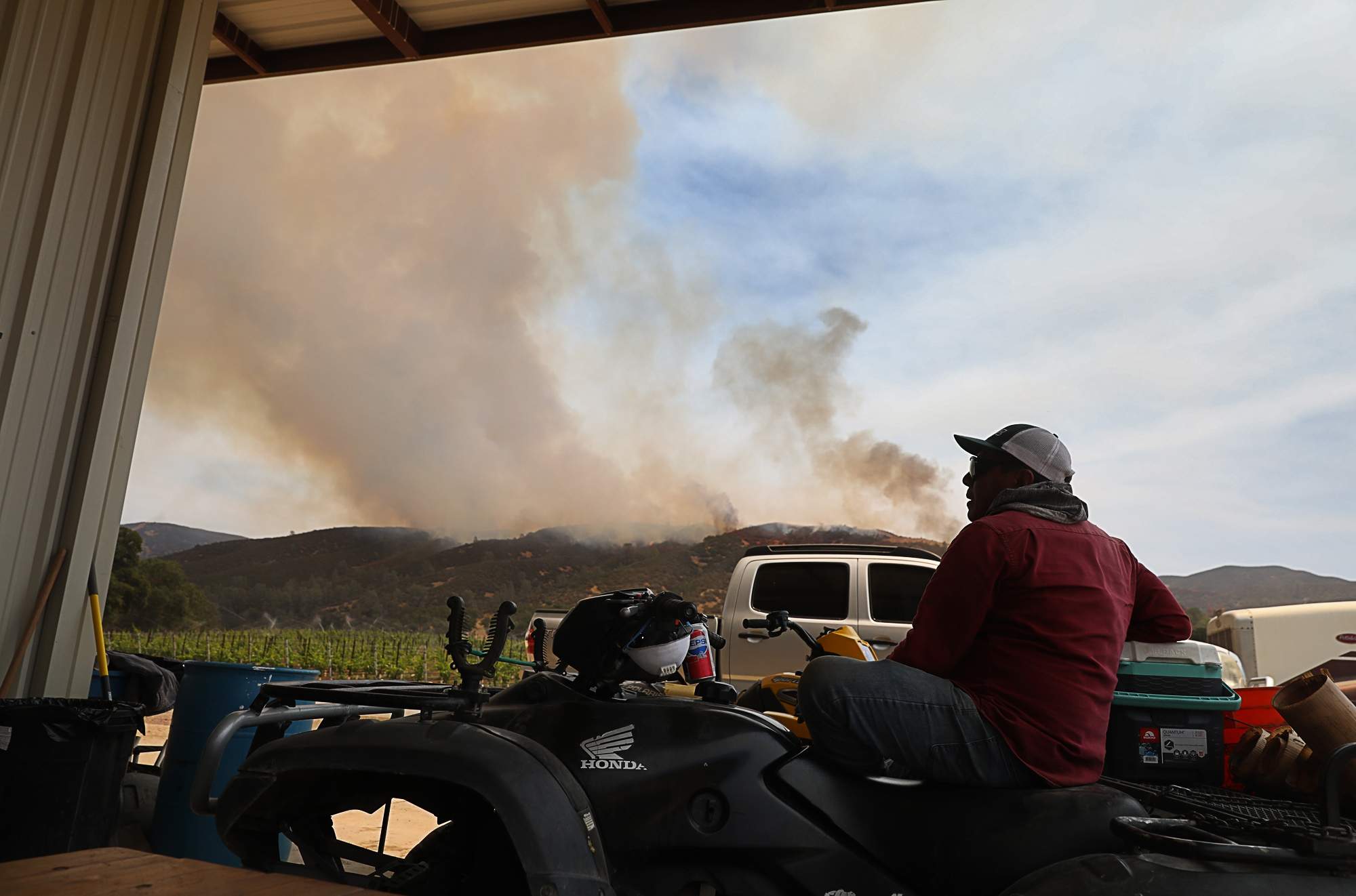
In October 2019, the largest wildfire on record in Sonoma County thundered down from the Mayacamas Mountains into vineyard-rich Alexander Valley. As the flames pushed west to threaten Healdsburg and Windsor, Sheriff Mark Essick ordered the evacuation of nearly 40% of the county — more than 190,000 people, many of whom fled their homes in the middle of the night. The sheriff’s warnings over Twitter were increasingly urgent: “If you have NOT evacuated, DO SO NOW!”
On the north side of town, Corazón Healdsburg, a community center serving predominantly Latino families, was swiftly being converted into a Red Cross evacuation shelter for the refugees, many of them vineyard workers and their families, pouring in from the rural outskirts.
The community center’s emptied rooms were soon filled with rows of cots. Children carrying stuffed animals clung to their parents. Some families brought their dogs and cats, even their horses. One group of workers arrived after spending the previous night on the floor of a barn. The smoke was getting worse, and the sounds of helicopters and sirens could be heard outside.
Ariel Kelley, Corazón’s cofounder and then-CEO, sat at a table in the courtyard in her N95 mask, writing down names and addresses of the families anxiously seeking shelter. They asked her: How close was the fire? What was going to happen?
Kelley was surprised to find, even with the fire at close range, evacuated vineyard workers continued to go to work. They would drop off their belongings on a cot and leave in buses that pulled up outside Corazón’s doors.
Seeing that few of the workers had masks, Kelley and her staff grew concerned. They didn’t know where the workers were being taken, what the conditions were like when they got there, or who was looking out for their safety.
“We were telling them, ‘You have the right to stay here and protect your health. You don’t have to go to work,” recalls Marcy Flores, a programs manager at Corazón. “And they were just in this mindset of, ‘No, I do. I have to get paid, I need to go.’”
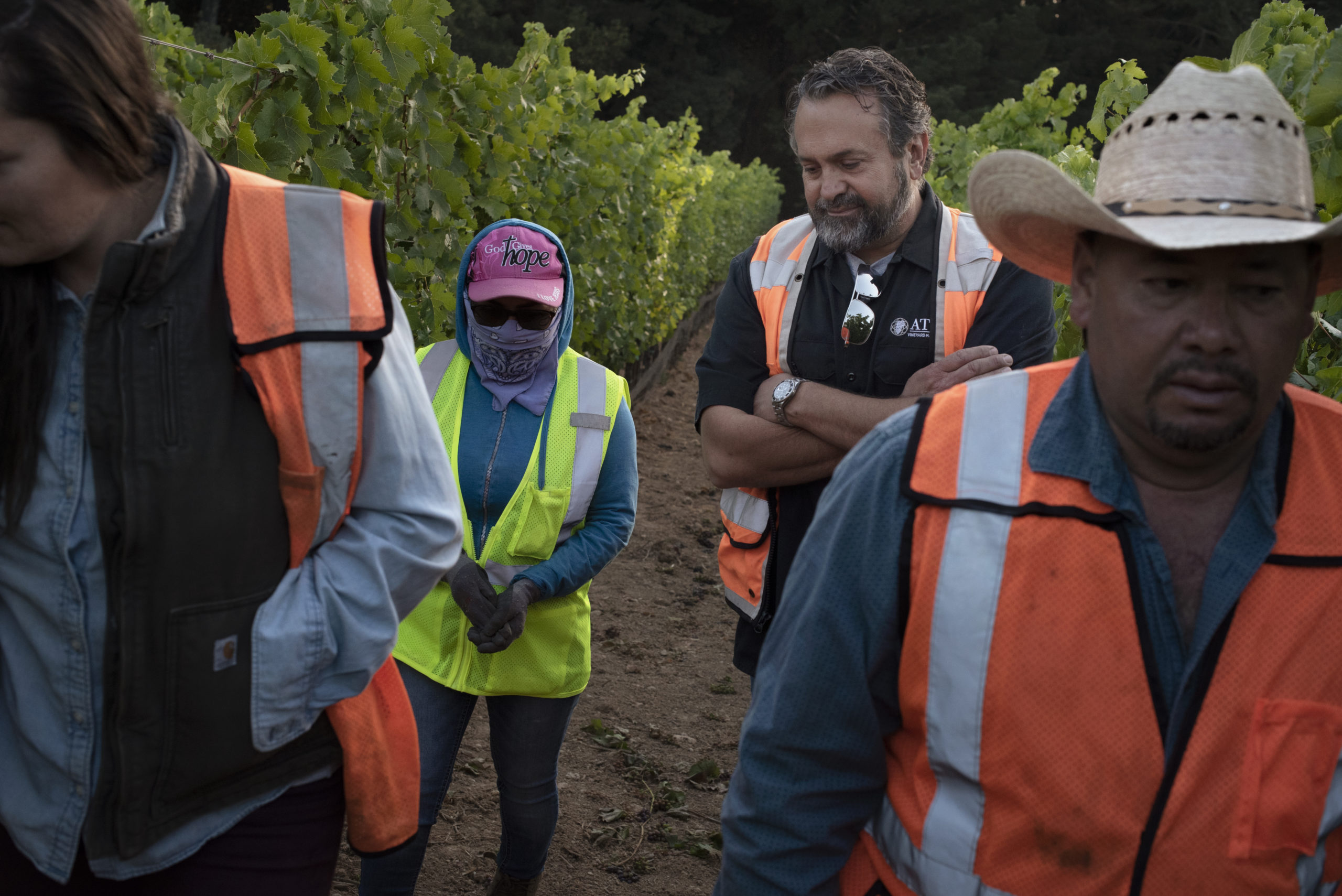
An Industry Adapts
As the threat of wildfires intensifies across Northern California, Sonoma County’s wine industry has begun to adapt to this existential challenge by changing the way it trains, deploys, and supports its workers. The Sonoma County Farm Bureau and the Sonoma County Grape Growers Foundation have begun offering trainings on wildfire safety in English and Spanish, and are also working with the county’s Agricultural Commission to refine the system of allowing work inside evacuation zones. In addition:
During active fires, vineyard managers and crew leaders have adopted a range of safety measures in the field, including buddy systems, monitoring of wind speed and direction, and outfitting vehicles with extra water and fire extinguishers.
When smoke is present, some employers are making changes to the ways they deploy their crews: paying by the hour rather than by weight, using their own air quality sensors for more accurate on-the-ground readings, or determining their own, often more conservative standards, for what is considered “safe.” Some employers are choosing not to harvest inside evacuation zones. And others will stop outdoor work altogether when conditions are poor.
In certain cases, the industry has also provided direct financial assistance: Since 2017, the SCGGF has aided at least 1,500 farmworkers with gift cards, help purchasing RVs, and grants to pay rent.
Tony Bugica, the Atlas farming and business development director, starts every morning with transcendental meditation for exactly 23 minutes. He’s only missed one day: in early October 2017, when he and his crew were fleeing the Tubbs fire. That year, and every year since, Bugica has had to make tough decisions balancing business interests with the safety of the workers under his watch.
Smoke is hazardous for humans, but it’s also bad for grapes. If it hits the wrong varietal at the wrong time, it can cause smoke taint, a set of off-flavors that can render the fruit unusable.
During a fire, the harvest becomes a frantic salvage job. Vineyard managers like Bugica are tasked with bringing in as much of the crop as they can, as safely they can.
In 2019, with the Kincade fire burning nearby, Bugica pulled his truck up to a checkpoint at the edge of the evacuation zone near Healdsburg, hoping to get inside. Grapes needed harvesting in a vineyard off Westside Road, where residents had already been cleared out. Earlier that day, he and his 5-year-old daughter had watched planes dropping fire retardant onto the hills. The smoke had created a “blackout” in Healdsburg, but where he sat, for the moment, at least, the air quality was good.
In his hand he carried a piece of paper signed by the county’s Agricultural Commissioner stating that he and the handful of crew members accompanying him had essential agricultural duties to perform inside the evacuation zone. The officer at the checkpoint decided conditions inside were safe enough and waved Bugica through.
Once on the property, Bugica says he evaluated the situation. He looked at wind speed and direction and tested the air quality with his portable sensor. All seemed OK.
Satisfied with the conditions there off of Westside Road, Bugica called in his crew.
The ad-hoc “Ag Pass” system that allowed Bugica and his crew to pass through evacuation checkpoints was designed to accommodate the needs of the county’s farmers. The program, which began in 2017, was a singular effort among different Sonoma County jurisdictions to verify whether a farmer or landowner has a legitimate business reason to enter evacuation zones.
During the Glass and Walbridge fires of 2020, Agricultural Commissioner Andrew Smith’s office issued passes to 613 agricultural producers and their employees. “People make calculated risks to support their business and their livelihood,” says Smith. “If you’re an employee, you always have the opportunity to decide whether you want to go. No one’s forcing anyone to do this work, and it’s not appropriate for them to do so.”
But those close to the farmworker community worry low-income workers who don’t speak English and aren’t trained to evaluate the risks are being asked to work in areas deemed unsafe for the general population. Aside from their employers, advocates say, no one is responsible for their well-being.
“The default should be protecting health and human safety — and to not let that be outweighed by the economic pressure of picking grapes. And that’s a really challenging conversation to have,” says Kelley, the Corazón Healdsburg cofounder.
Whoever is staffing the checkpoint—whether it’s the sheriff, highway patrol, or even the National Guard— has final discretion over whether to let crews into evacuation zones. But the perimeter of these areas can be vast, the boundary not necessarily reflective of shifting smoke conditions. What’s safe one minute, in one place, may not be safe the next.
Aside from vineyard managers like Bugica, who else decides what’s safe and when? And to whom are they accountable?
“That’s a very, very, very good question,” says Alegría De La Cruz, an attorney and director of Sonoma County’s newly created Office of Equity.
With OSHA limited in its capacity to respond to workplace safety violations, some labor activists are questioning whether local government should be playing a bigger role. Elected officials and health and business leaders “have the direct responsibility to protect and advocate for our most marginalized workers,” says Fish, the Santa Rosa physician. “They’re the ones with the power.”
While various county agencies own a piece of the disaster response during a wildfire, none are specifically tasked with monitoring worker safety, either inside or outside evacuation zones. “That’s OSHA’s responsibility,” Smith says. “Why would we want to adopt responsibility for something that we don’t have the legal authority to do?”
There’s new recognition within the wine industry, as well as the government, that broader support is necessary.
At the county level, Smith is working with De La Cruz’s office and a host of other agencies, as well as community stakeholders and farmworker groups, to revise the current Ag Pass system, an effort that is also occurring at the state level. Sonoma County Winegrowers and the Sonoma County Farm Bureau have started offering wildfire safety training sessions that will become a requirement for anyone applying for such passes in the future. Tony Bugica and the rest of Atlas’ crew leaders are already certified.
The momentum aligns with a growing recognition, De La Cruz says, “that Sonoma’s not alone in these challenges. Our state is dealing with this too. This gives us a real opportunity for leadership.”
Rivas, the state Assemblyman, has introduced new legislation aimed at protecting farmworkers during fire season. The bill would give OSHA authority to deploy “wildfire smoke strike teams” to check on worker safety in real time; would create a state stockpile of protective equipment for workers; and would require regular wildfire safety trainings for employees in English and Spanish.
“Agricultural work has always been essential,” says Rivas. “We have to do better. We have to do more.”
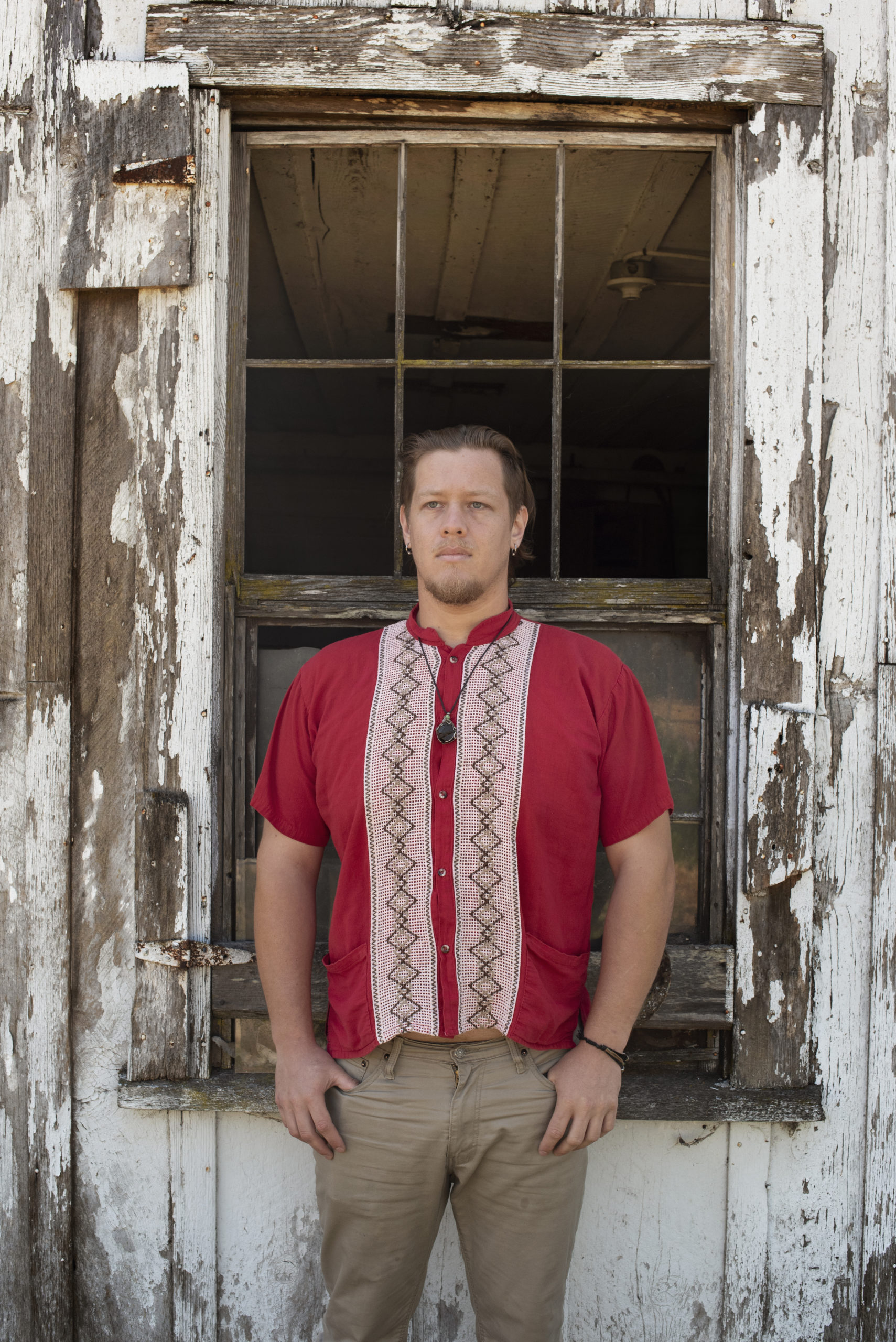
Vineyard workers who fear that policy change is not keeping pace with the urgency of the moment are stepping up to make sure their voices are heard.
Maria Salinas, a mother of four, is a veteran former field hand whose relatives still work in Sonoma County’s vineyards. She’s seen them come home after working during a wildfire, “covered in ash and soot, spitting up gobs of black saliva.”
Salinas speaks Chatino, an Indigenous language from southern Mexico. She came to the U.S. in 2003 and is now a full-time activist with the region’s Indigenous immigrants, many of whom are vineyard workers.
Last year, during the twin emergencies of the pandemic and the worst wildfire season on record in California, farmworkers began to share their accounts with Salinas and others of the fear and danger they were experiencing. The stories gave momentum to a budding movement ,but also exposed, according to Salinas and Paz, a dearth of data on the experiences and concerns local farmworkers have with wildfire and smoke.
Working with Michael Méndez, an assistant professor of environmental planning and policy at UC Irvine, labor organizers developed a survey about farmworker health and safety concerns that has since garnered over 100 responses.
The tally was encouraging, and this summer the project team turned to identifying farmworkers who might serve as leaders for their ranks on the issues of worker safety and a range of other priorities. Three dozen of them—including female, LGBTQ, and Indigenous vineyard workers— stepped forward to begin that process.
“People who have been doing this work for much longer than me said they’d never seen anything like it,” Paz says. The coalition they’re building as a result of their work on fire safety, he says, is an important new step—though he feels strongly that their work is built on that of previous movements for worker justice in California.
“We started this movement with a small team, and I was anxious,” says Salinas. “But joining with other organizations, we’ve started growing.”
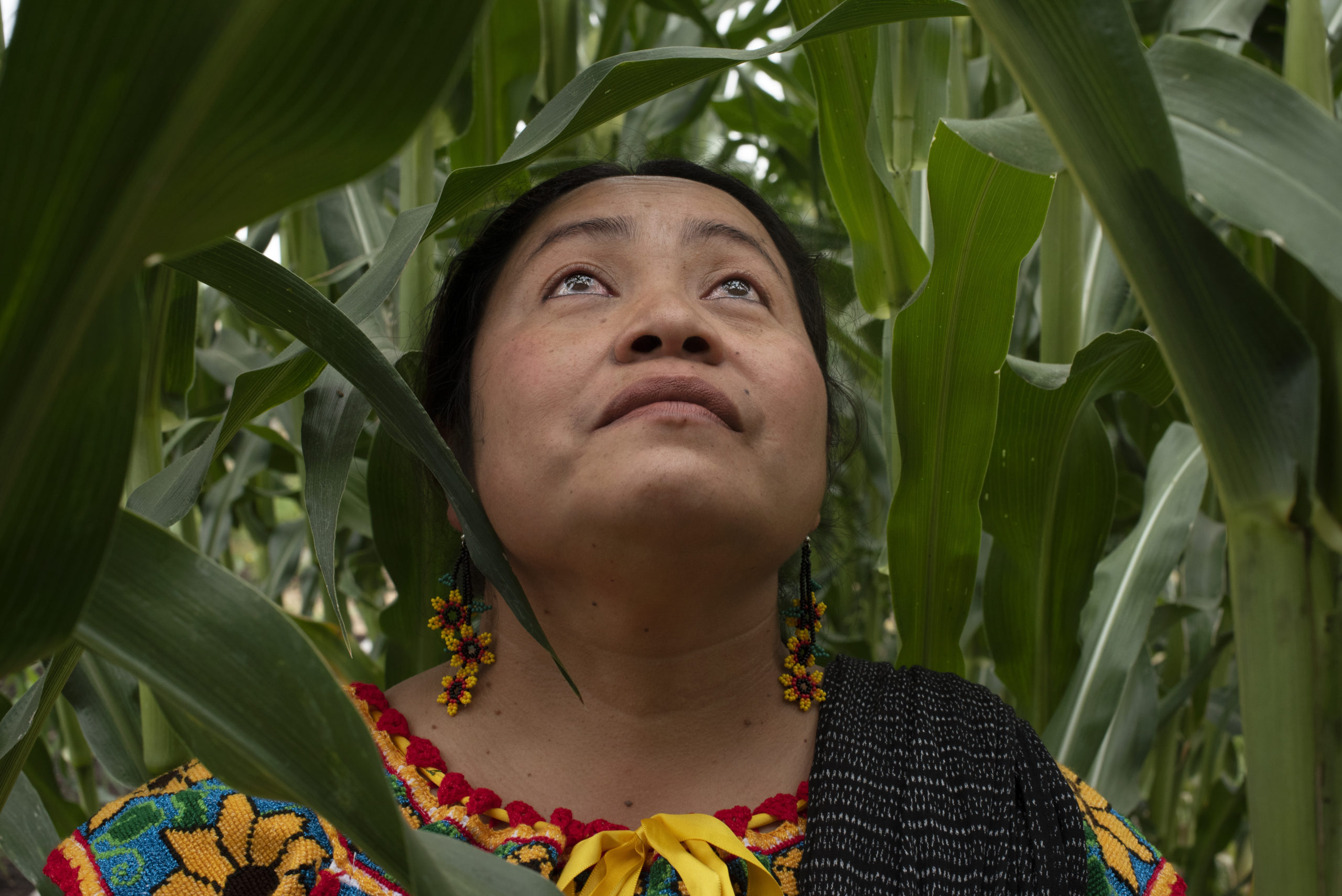
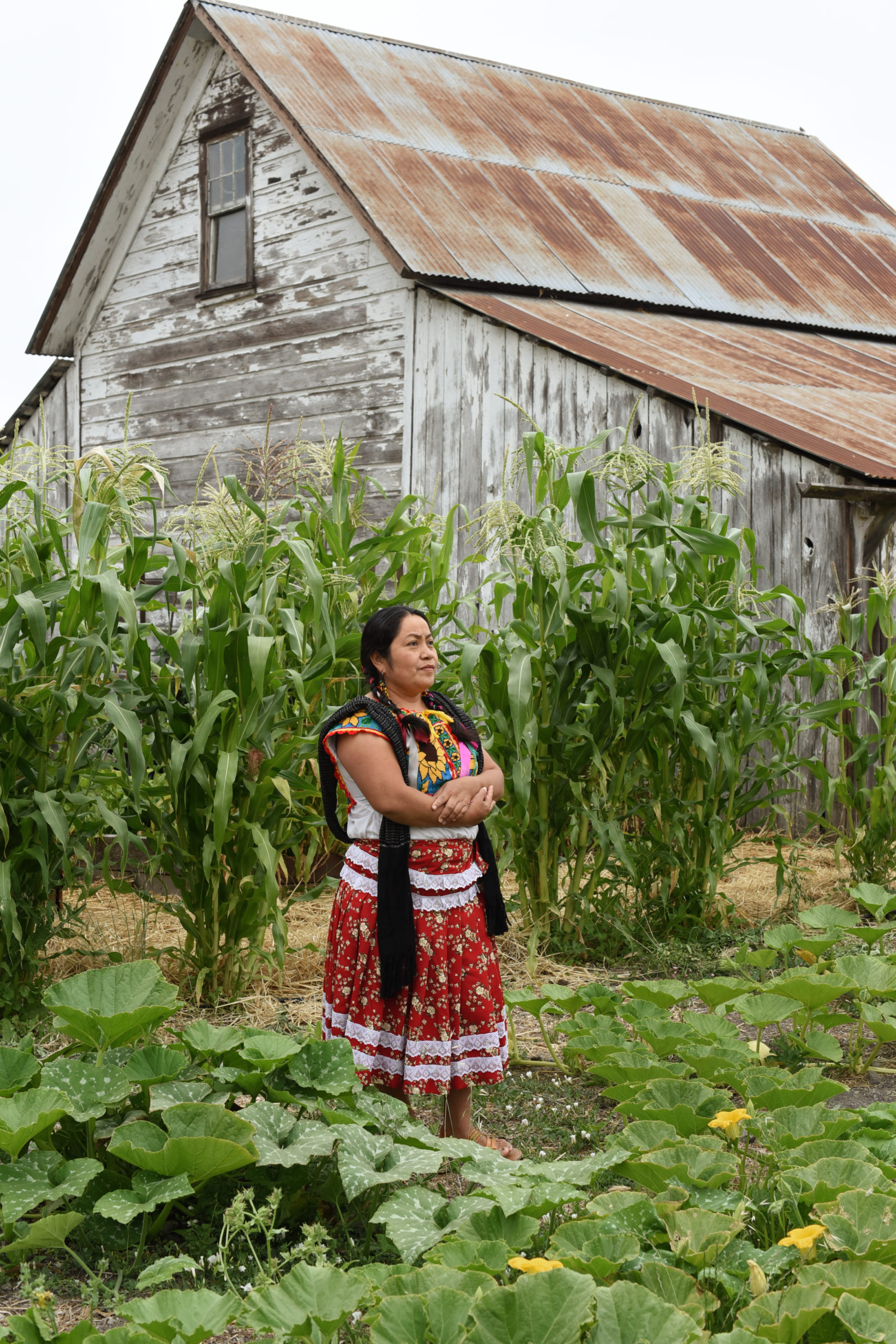
Amid the range of existential issues posed by climate change and wildfires, wineries and vineyards are also making changes to the ways they harvest their crops during emergencies.
Cameron Mauritson of Thomas Mauritson Vineyards touts his farm’s ability to employ a full-time vineyard crew, which allows more control over the way workers are deployed. In Healdsburg, Preston Farm & Winery and Quivira Vineyards operate under a similar in-house model.
But that setup is less common, as outsourced vineyard management companies provide economy of scale and savings in much of the county.
Mauritson has experimented with paying his harvest crew by the hour, rather than by the ton, when there’s smoke. This way, they’re able to not work at their normal breakneck speed. He also provides free housing to nearly 60 people—employees and their families— and extra sick and vacation days. The winery guarantees a minimum wage even when employees are prevented from working due to circumstances like wildfires.
These are the kinds of changes that some individual employers are able to make. But when it comes to policy, Mauritson says, “we need to have more seats at the table for the people who are doing the actual work.”
“If anything, there’s proof out there that you can effectively pick your crop as needed, as long as you’re being thoughtful about it,” says Kelley, who was elected last year to the Healdsburg City Council.
For Paz, the positive steps by some show that more needs to be done across a wider swath of the industry to support workers — so they don’t feel they have to choose between their safety and paying next month’s rent. “We want to be partners with government and industry,” he says. “We’d love to support vineyards that make the changes for a better workplace.”
IIn July, back at Atlas headquarters, Tony Bugica sat in his office and considered the five priorities farmworker advocates had recently put forward to protect local vineyard workers: disaster insurance; hazard pay; safety trainings in Spanish and Indigenous languages; clean bathrooms; and community safety observers trained to accompany workers into the fields during fire emergencies, ready to report safety violations to CAL/OSHA.
Bugica didn’t balk at the first four — although he isn’t prepared to open his fields to community safety observers. When it comes to OSHA inspectors, however, “we have an open door policy,” he said, spreading his hands wide.
Whether the industry at large is as flexible and ready for those changes remains an open question.
Another peak fire season is fastening its grip on the region, and no one knows what that will bring this year. If the last four years are any indication, it may well resemble a now-familiar harvest scene, mirrored by thousands of workers in vineyards spread across the county, their heads bent low, clouds rising behind them. The figures are small, the sky smoky and vast.
But that outside perspective overlooks an element that is central to the story of farmworkers and fire, says De La Cruz of the county’s Office of Equity. “These workers are highly skilled,” she says. “There is a lot of pride and care that goes into the work they do with these vines.”
Maria Salinas makes a similar point. “Farmworkers deserve something better. Dignidad.” She repeats the last word several times, nodding.
“I feel very excited and hopeful for the work we’re doing,” says Salinas, “knowing that it may be a long journey ahead.”
